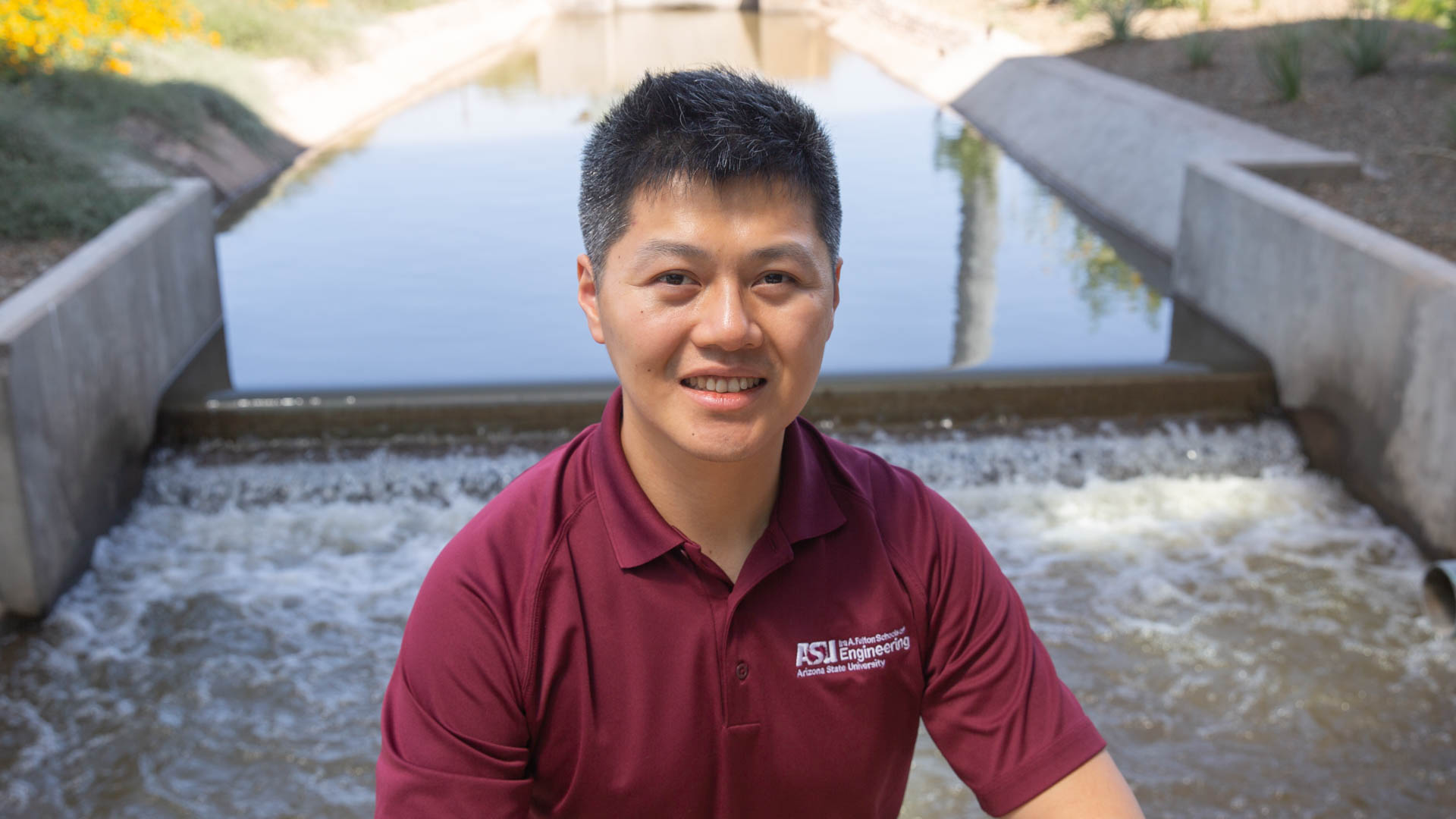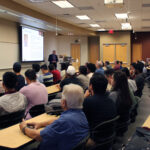
ASU researcher maps farm drainage networks to conserve water

When you think about farms, you may think about fruits, vegetables, cows or chickens. However, common byproducts of farms are nitrogen and phosphorus caused by the excess use of pesticides, herbicides, fertilizer and animal waste.
Some may consider those byproducts to have an insignificant impact on the environment when thinking of a single small farm. Yet, collectively, the impact of farming can cause what’s known as a “dead zone,” or when high levels of nitrogen and phosphorus kill fish and wildlife in large bodies of water and cause harmful algal blooms that are toxic to humans. Water pollution from agricultural runoff is one factor in the complex challenge of managing water resources and conservation efforts.
As water conservation efforts increase worldwide, Ruijie Zeng, an assistant professor of civil, environmental and sustainable engineering in the School of Sustainable Engineering and the Built Environment, part of the Ira A. Fulton Schools of Engineering at Arizona State University, recognizes the need for improved mapping of agricultural drainage networks and natural rivers to upscale water management practices on farms.
While a doctoral student at the University of Illinois, Zeng can recall taking bike rides through the countryside and seeing runoff from farms so heavily polluted that it had changed the water’s color.
“We are environmental engineers. We have to engage with the environment,” Zeng says about how he finds issues to solve. “I always tell my students, ‘Go hiking, see the natural ecosystem and come back.’”
Tile drainage systems used on farms, like the ones Zeng saw in Illinois, work by allowing water to drain out of the soil so that plants have oxygen. This system is most commonly used in the Midwest because the ground is relatively flat, meaning that water has difficulty moving naturally and may spoil harvesting conditions and damage farming equipment. While Zeng’s research will be primarily focused on areas in the Midwest, he says the findings could also be applied to farms throughout the Southwest.
“In the Southwest, agricultural drainage is always associated with irrigation,” Zeng says. “Knowing the agricultural drainage will help farmers in the Southwest to conserve irrigation water and control field salinity. In addition, the drainage in the Southwest may also be an important factor to sustain local ecosystems, as agricultural drainage provides water to the downstream ecosystems.”
To date, research has been conducted on individual farms. However, this presents a problem because the research is verified by observations and experience rather than theory or logic, meaning that what may happen on one farm may not be applicable to another.
Zeng has identified knowledge gaps in agricultural drainage mapping that he believes can be answered using algorithms, drones and simulation models. With support from a 2023 National Science Foundation Faculty Early Career Development Program (CAREER) Award, he will advance research that applies to farming on a larger scale.
CAREER award recognition is reserved for junior faculty who show the potential to be academic role models and advance the missions of their organizations. Awardees each receive approximately $500,000 over five years to further their work.
“We are absolutely delighted to see Dr. Zeng’s innovative research endeavors supported through the award of a prestigious and highly competitive NSF CAREER award,” says Ram Pendyala, director of the School of Sustainable Engineering and the Built Environment. “His work aimed at re-engineering agricultural drainage infrastructure is going to be highly impactful, especially for areas such as the Southwest that are facing an unprecedented drought.”
The endeavor of mapping agricultural drainage networks, improving hydrologic models and assessing variables takes time and fits within the five-year time frame of the CAREER award.
“[The CAREER award is] kind of a long-term investment for the junior faculty,” Zeng says. “Other funding agencies weren’t inclined to fund this type of project because they think it will not generate immediate results, but it will generate more understanding.”
Currently, river mapping data is available for government agencies like the Environmental Protection Agency, or EPA, to monitor and regulate river networks in select areas but this mapping doesn’t extend to farm drainage networks. This is because farm tile drainage networks use a combination of ditches and pipes.
The issues with mapping these types of networks are largely related to visibility. While ditches are in plain sight, they are still relatively small compared to river networks and can be overlooked by physical observation alone. Additionally, drainage pipes, which are located underground, can be completely undetectable without the right resources.
This is where Zeng and Chuncheng Yao, a civil, environmental and sustainable engineering doctoral student, step in. Using unmanned aerial vehicles, or drones, Zeng and Yao plan to research farm drainage networks through multi-spectral imagery. Using near infrared bands that human eyes cannot see, Zeng and Yao can determine a surface’s soil moisture patterns to help indicate where drainage is occurring.
“It’s very tricky since these patterns usually happen at a certain time after heavy precipitation,” Zeng says. “We call this ‘chasing the storm.’”
Once Zeng and his team have this data, they will be able to develop an open-source program to automatically map open drainage ditches based on terrain data.
“This program will help stakeholders explicitly represent the engineered channels in their own models,” Zeng says. “We will hold workshops, both online and in-person, to teach people how to use the open-source program as an outreach and professional development component for broader impact.”
While Zeng’s research will be utilizing technology to advance mapping, the final product’s effectiveness will be highly dependent on community involvement.
“The most important thing is to communicate with farmers,” says Zeng, who expects to begin reaching out to members of the farming community in 2024. “They know their own farm very well. We want to know whether our models are correct or not correct. Farmers can provide us information on whether the process in our model is correct so that we can improve it. It’s a two-way communication with them.”
Community involvement is also important because while farmers have guidance from the EPA on how to avoid environmental issues, there is no way to accurately measure whether their efforts in prevention are effective.
“The farmers in this region care about the environment,” Zeng says. “They want to reduce agricultural waste. This research will provide a tool for the decision-makers and stakeholders to talk with individual farmers to advance and develop more water conservation programs.”



































